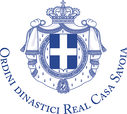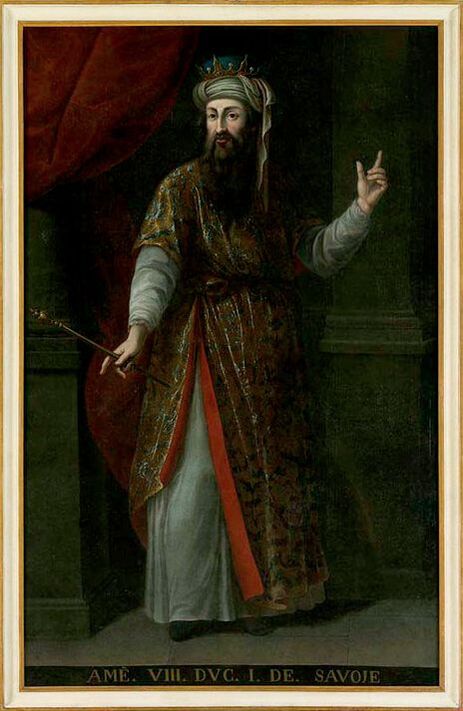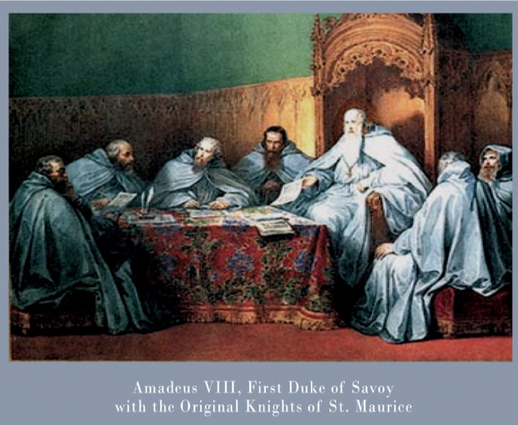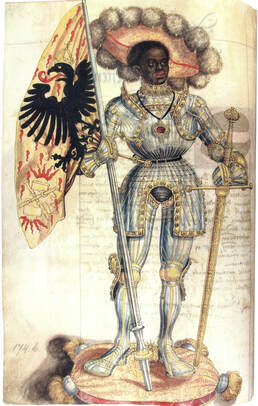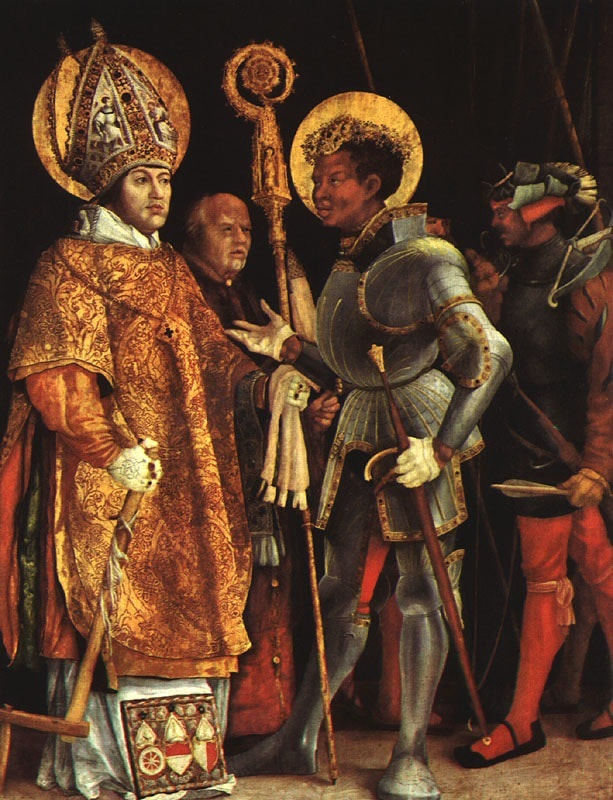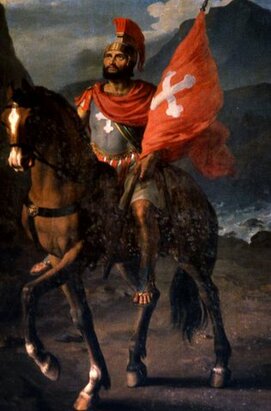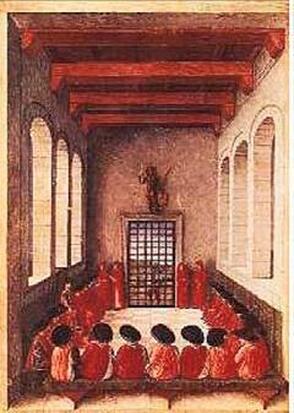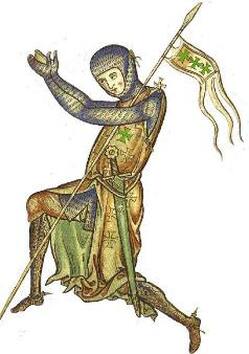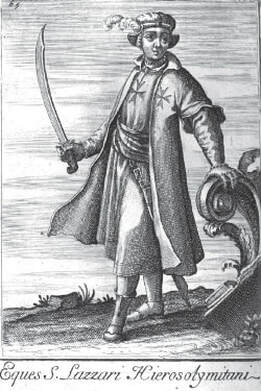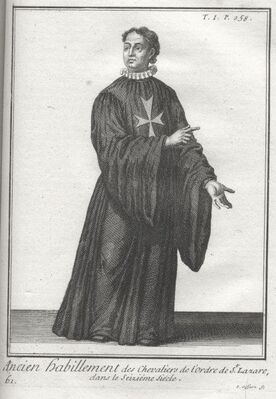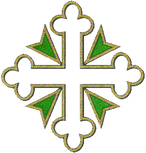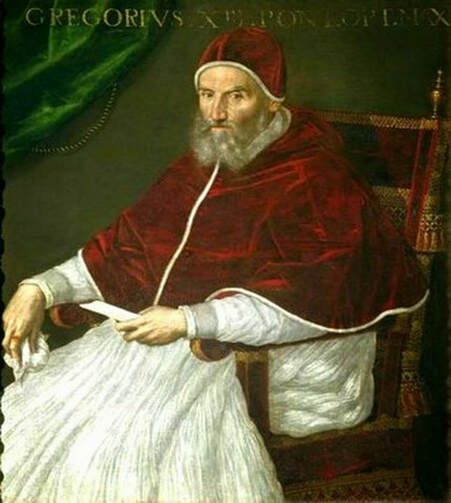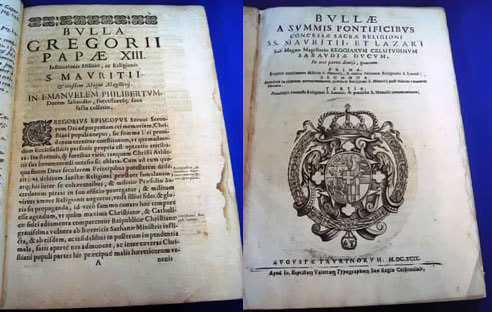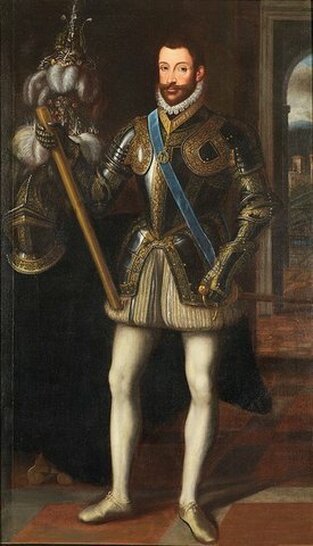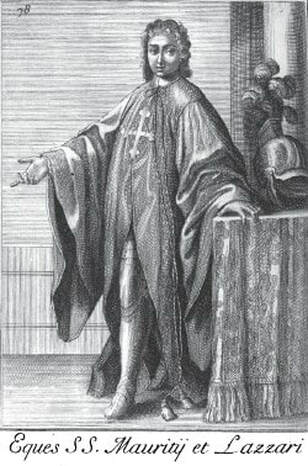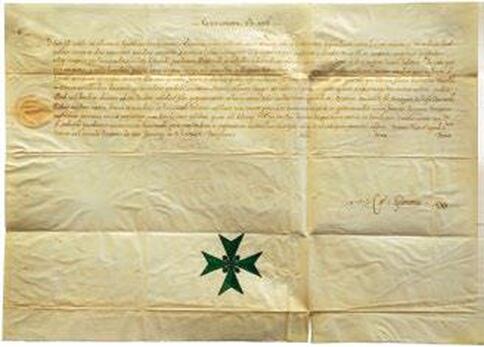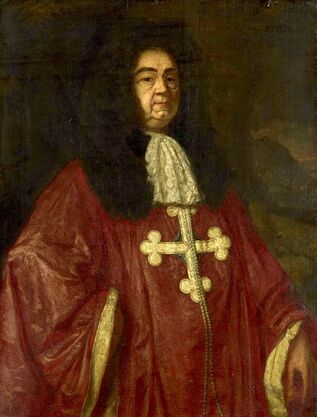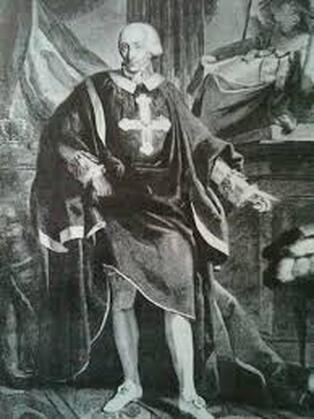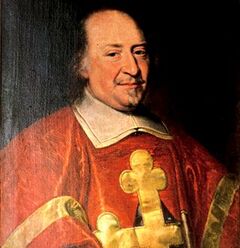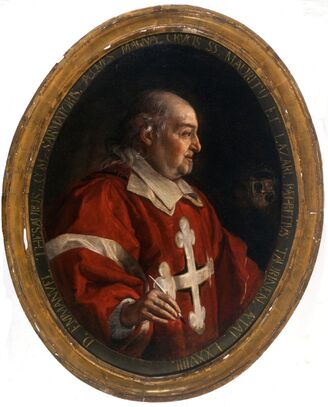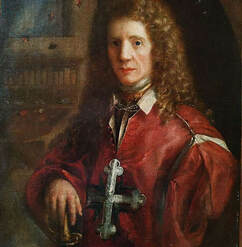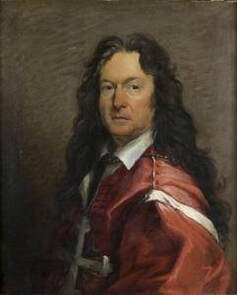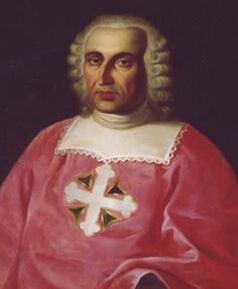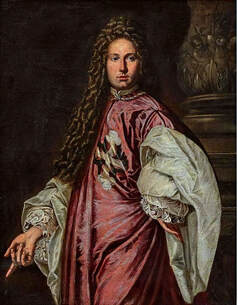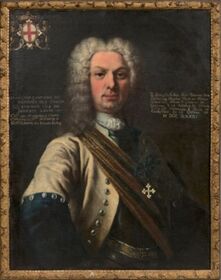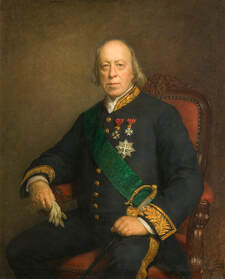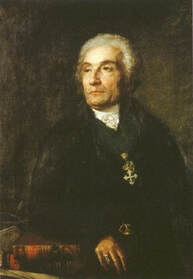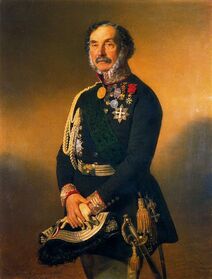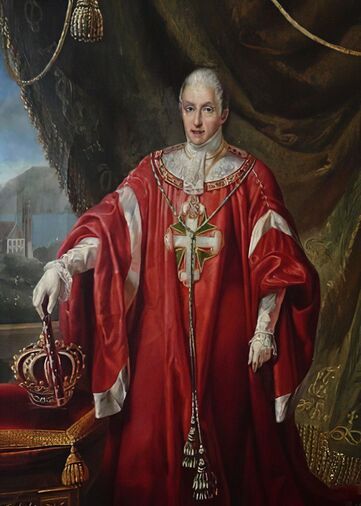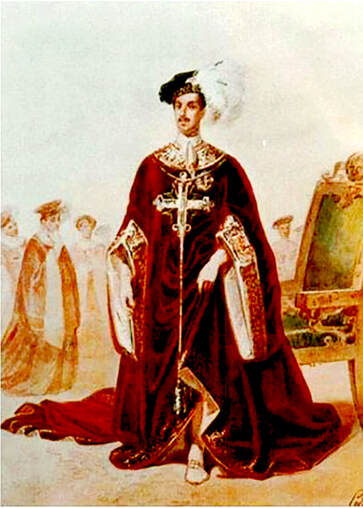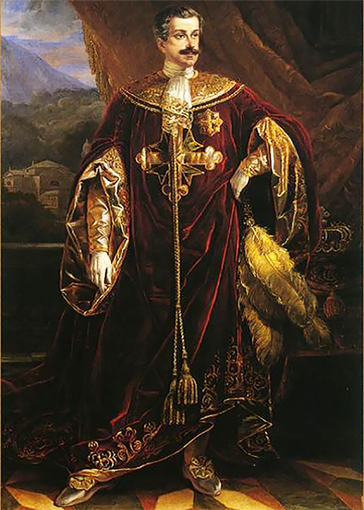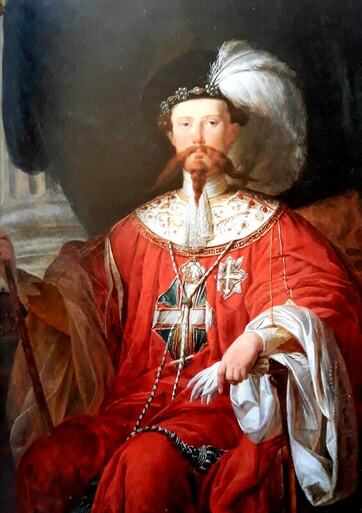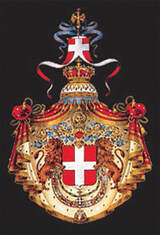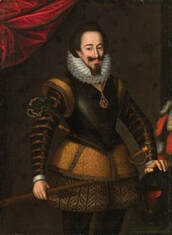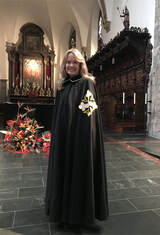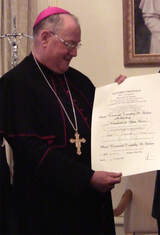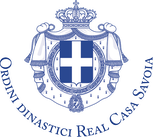American Delegation of Savoy Orders
Order of Saints Maurice and Lazarus
History
of the
Order of the Saints Maurice and Lazarus
|
Order of Saint Maurice (c.1434)
|
The Order of St. Maurice was established in 1434, at the Castle of Ripaille (on the southern shore of Lake Geneva) by Amadeus VIII, first Duke of Savoy (reigned 1391 — 1440). It was founded as a society of noble monks to accompany him on his retreat from secular life. The Order was named after the patron saint of the House of Savoy, Mauricius (sometimes written as Mauricianus or Mauritius), an early Christian who was the military leader of the Roman Empire's Theban Legion in Alpine Gaul. He was martyred together with his legionnaires circa 286 A.D. at Agaunum (today's Swiss town of St. Maurice d'Agaune at the eastern end of Lake Geneva) for refusing to worship the Roman Emperor, offer sacrifices to pagan gods and persecute his fellow Christians.
For more than 1,000 years, St. Maurice, the Knight of the Holy Lance, has been the inspiration for the ideals of King Arthur and the Knights of the Round Table because he was pure of heart and blameless in spirit. He has been portrayed in many sculptures and paintings, sometimes as an African. |
Saint Maurice
|
During the Middle Ages, his shrine drew hordes of pilgrims on his feast day, celebrated today on September 22. Hundreds of parish churches and towns were named after him. Up until the late Renaissance, St. Maurice’s martyrdom figured among the highest acts of faith venerated by Christians. He was also the patron saint of the Holy Roman Empire, of Austria as well as of the Papal Swiss Guards in the Vatican—the protector whose sword, when held by the blade, becomes a cross.
From its origins, the Order of St. Maurice was an “ordine combattente” (military order), whose aims were to serve God, promote a monastic life, and to assist the State in its needs. Over a century after the death of Amadeus VIII, the Order of St. Maurice declined until, under the leadership of Emmanuel Philibert (1553-1580), fourth Duke of Savoy and great-grandson of Amadeus VIII, it was revived in 1571 with a military and religious character by Pope Pius V. In 1572, the Order was combined with the Order of St. Lazarus by Pope Gregory XIII. |
Order of St. Lazarus of Jerusalem (c. 1100)
|
The more ancient Order of St. Lazarus of Jerusalem had been founded as a hospitaller order in the form of a military and religious community at the time of the Latin Kingdom of Jerusalem. The origins of the Order date back to the foundation, circa 1100, of the Hospital of St. Lazarus, by a group of crusaders who called themselves "Knights and Brethren of St. Lazarus." The hospital for leprosy was situated outside the walls of Jerusalem, where lepers were cared for by Armenian monks living their devotions by the rule of St. Basil of Caesarea. The Biblical Lazarus is said to have lived a holy life helping the poor and the sick and became the patron saint of lepers. His name eventually gave rise in Italy to the terms "lazar" for leper and "lazaretto" for leprosarium or leper house, where victims of the disease were sheltered. The Order’s primary objective was assisting lepers, many of whom were among its members.
|
Endowed with estates and privileges, including that of administering and inheriting the property of lepers, the Order prospered until it experienced a period of decline, as it suffered from the loss of its possessions, the decrease in leprosy in Western Europe and rivalries for its leadership. With the advance of the Saracens, the knights of St. Lazarus left the Holy Land and Egypt and eventually migrated to France (1291) and Naples (1311) where they founded leper hospitals (A confinement house for patients suffering from communicable diseases is still known in Italy as a "lazaretto.") The Order of St. Lazarus in Naples alone was afterwards recognized by the Holy See as the legitimate descendant of the Jerusalem community. The Order was empowered to seize and confine anyone suspected of leprosy, including that of administering and succeeding to the property of lepers.
|
|
During the 15th and part of the 16th centuries, its main seat was the St. Lazarus hospital near Capua. Dissensions during this period broke out among the knights and the Order declined until following Giannotto Castiglioni, the position of Grand Master went to Duke Emmanuel Philibert of Savoy in 1571. Attempts at unification with other orders by Popes Pius II and Sixtus IV did not succeed until 1572 with the intervention of Pope Gregory XIII and the Savoy Order of St. Maurice.
Under the Grand Mastership of Duke Emmanuel Philibert of Savoy (1553-1580), the Order of Saint Maurice and the Order of Saint Lazarus were united by the Papal Bull Pro Commissa Nobis of Pope Gregory XIII on November 13, 1572. Grand Mastership of the Order was granted by the Pope in perpetuity to the head of the House of Savoy by Magistral letters patent of January 12, 1573. As one community, the members devoted themselves to the defense of the Holy See and to fight its enemies as well as to continue assisting lepers. The galleys of the order subsequently took part in various expeditions against the Turks and the Barbary pirates. |
Order of Saints Maurice and Lazarus (1572)
Papal Bull Pro Commissa Nobis
|
The combined Order of Saints Maurice and Lazarus prospered from the support given by the House of Savoy and the Papacy. Originally the Order was part religious and part military. Some knights took holy orders like monks and were expected to fight to defend the faith and the sovereign. Their mission was also to protect the Papal States' shoreline from the Barbary pirates. The Order was held in such high esteem that many European sovereigns urged their more illustrious noblemen to seek admission.
Over the centuries, the Order progressed in many areas for the good of mankind while extending its secular power. Military activities were eventually replaced by the building and operation of hospitals in strategic locations in Piedmont. Leprosy, which had almost disappeared in the 17th century, broke out once more in the 18th century, and in 1773, a hospital was established by the Order of Saints Maurice Lazarus at Aosta, made famous by Xavier de Maistre’s tale, Le Lépreux de la cité d’Aoste. This would remain its principal activity for the next few centuries. By the time that statutes were published in 1816, the Order had lost its military character. It was reformed first by Charles Albert of Savoy, King of Piedmont, in 1831; and later by Victor Emmanuel II of Savoy, King of Italy, in 1868 and by the current Grand Master Prince Victor Emmanuel of Savoy in 1996 and again in 1999. |
|
After the unification of Italy in 1861 and the proclamation of the Italian Kingdom under the Savoy dynasty, the knighthood of St. Maurice and Lazarus became a state dignity conferred by the King, as hereditary Grand Master, on persons distinguished in the public service, science, arts and letters, trade, and above all in charitable works, to which its income was devoted.
The Italian throne was formally abolished by referendum in 1946 and a republic was instituted in its place. In 1946, when King Umberto II left Italy for exile in Portugal in 1946, he remained Grand Master of the Order of Saints Maurice and Lazarus, and continued to bestow it. The Holy See continued to recognize the King's leadership of the Order because of its dynastic nature conferred by papal authority in 1573 and its considerable historic achievements. The Grand Mastership of the Order passed to the King's only son, H.R.H. Prince Victor Emmanuel of Savoy, who became the Head of the Royal House of Savoy on the death of his father on March 18, 1983. |
The Order has more than 2000 members, Knights and Dames of all ranks, in 35 Delegations throughout the world. H.R.H. Prince Victor Emmanuel of Savoy is the 17th Grand Master. A Grand Chancellor, an Executive Committee, a Council, and Delegates, responsible for their respective Delegations throughout the world, assist in the administration of the Order.
The Prince successfully reorganized the Order of Saints Maurice and Lazarus as a confraternity of Knights and Dames, whose primary objective remains to aid the poor and the sick through charitable activities based on humanitarian principles and chivalric traditions. These goals are achieved by helping to create a better world through the exemplary traits of a true knight: honesty, loyalty, compassion, generosity, and forgiveness. The Holy See recognizes the Order as a Dynastic Order, although recipients need not be Roman Catholics. The Chancellery of the Order is based in Geneva. |
|
In 2001, the Grand Master appointed his son, H.R.H. Prince Emmanuel Philibert of Savoy, whose ancestral namesake had been the first Grand Master of the Order, to serve as Grand Chancellor. Prince Emmanuel Philibert is now the President of A.I.C.O.D.S. (International Association of the Dynastic Orders of the House of Savoy) and assists the Grand Master and the Grand Chancellor with the direction and governance of the Orders.
Admission to the Order is by approval of the Grand Master, either on his own initiative (motu proprio) or by his consent to admission of candidates proposed by his Delegates and recommended by the Council. Two international ceremonies for the Order are held annually in Europe. One commemorates deceased members of the Royal Family and is held at the Royal Abbey of Hautecombe in the old Duchy of Savoy, which is now part of the French Republic. The other, when new members are admitted to the Order or promoted in rank, is usually held in Geneva and at the Abbey of St. Maurice d’Agaune in Switzerland or in Rome, Italy. This occasion, known as the Capitolo Generale (Chapter General) of the Savoy Orders, usually includes an installation ceremony and a gala ball for the benefit of the charitable works of the Savoy Orders. |
|
|
|
